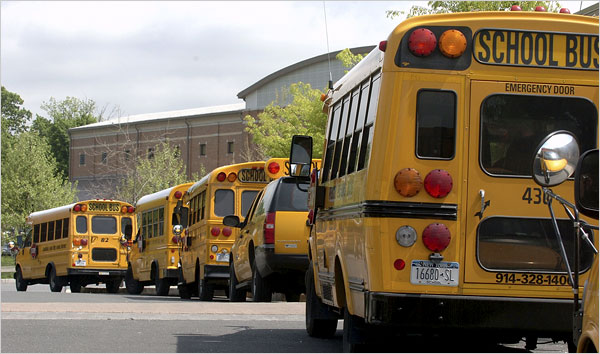Wanted: Quality Field Space and Sports Buses, OHS Athletes Suffer from a Lack of Space and Transportation
May 2, 2017
As spring sports are fully underway, athletes by the hundreds flock to their respective fields to compete for Ossining High School in some of the toughest leagues in Section 1 sports. While some teams have had early season success, others have suffered losses that many athletes feel could have been preventable.
The culprit in all of these losses? Limited field space.
Restricted room for practices has harmed athletes ever since the beginning of preseason, which for baseball and softball starts as early as January. Instead of building fundamentals and team chemistry over the course of preseason and tryout week, both teams often got infrequent opportunities or unsuitable facilities in which to practice. “The varsity and J.V. softball teams split the gym on rainy days and on every day of the preseason,” said Melanie Lattin, the varsity softball captain. While she acknowledged that weather did play a factor on field availability some days, she emphasized that practicing in the gym for weeks did not prepare the players for their first game. “Having our first game a day after we had practice on the softball field [for the first time] made it difficult for the players, especially the pitchers and infielders who had to adjust to the distance and the dirt the day of.” Similar space issues plagued the modified, J.V. and varsity baseball teams, says star pitcher Nolan Marx. “Modified baseball plays in a small gym not fit for baseball practice. J.V. and varsity baseball share a field which limits reps for the players.”
Not only do the baseball and softball teams have to share gym and field space, but the lacrosse teams do as well. On lucky days, the girls lacrosse teams split a turf field between the J.V. and varsity teams. On not so lucky days, they have to squeeze onto one side of the field and share the other half, or end early because of another team’s schedule. “It’s inconveniencing sometimes when we have to end practice early because another team has a game,” said Jacqueline Mundadan, a stalwart defender on the J.V. lacrosse team. Because the baseball and softball teams are already playing tag team with the two available gym spots, the lacrosse teams often revert to watching film in a classroom, which, while helpful for laying out game plans, doesn’t allow them to build muscle memory or physically work on new plays.
The issue of spacing becomes even more complicated when high school practices are held at different locations – baseball and softball diamonds in town parks, the gym and track at the local middle school – because adequate transportation to practices seems to be lacking in almost every spring sport. Take the track team, that has been granted two buses to take over 100 athletes to practice every day. One more bus is given to the softball teams, and even when teams share it is incredibly tight. If kids don’t get on the buses fast enough, they might not get a ride at all, says hurdler and mid-distance runner Angela Torricella, a rising star on the track team. “Seeing as there are so many teams practicing at AMD it only seems reasonable to have enough buses to fit everyone, for it isn’t fair to have some kids walk all the way to the middle school.” Athletes with multiple backpacks and bags of gear have to find a way to squeeze together on the lacrosse buses to games, too. Mundadan added that “our lacrosse teams sit three to a seat every single away game, with players sitting in the aisles and equipment closeted all throughout the bus.” These tight buses make it hard to focus on the upcoming games and practices, and worry over being able to catch a bus runs rampant, adding anxiety for players whose only options are to get a seat on the bus or walk a long way to practice and risk being admonished by coaches.
Once teams finally do get to fields for games, it can quickly become apparent that they have been practicing in subpar conditions. “Most schools..have a lot of field, not like OHS,” reports Nick Lividini, a prominent javelin thrower and hurdler on the OHS track team. “They have so much space and we don’t,” he added. Lividini feels that the throwers and jumpers would greatly benefit from improved field space at the OHS track. He explained that there was no “space to throw javelin, hammer, shot put and discus for the throwers,” who need practice before the meets to ensure they were prepared to go up against some of the best throwers in the section. Torricella added that “marking on the track at OHS would be enormously helpful,” that way sprinters would know when to start and stop for distances like 100m and 200m.
The overall trend of lacking space, be it on buses or on fields, has had a clear impact on the records and attitudes of many of the spring sports teams. Perhaps an investment in more busing and high-quality and easy-to-access fields would improve the chances of the OHS teams battling for wins and playoff spots.



